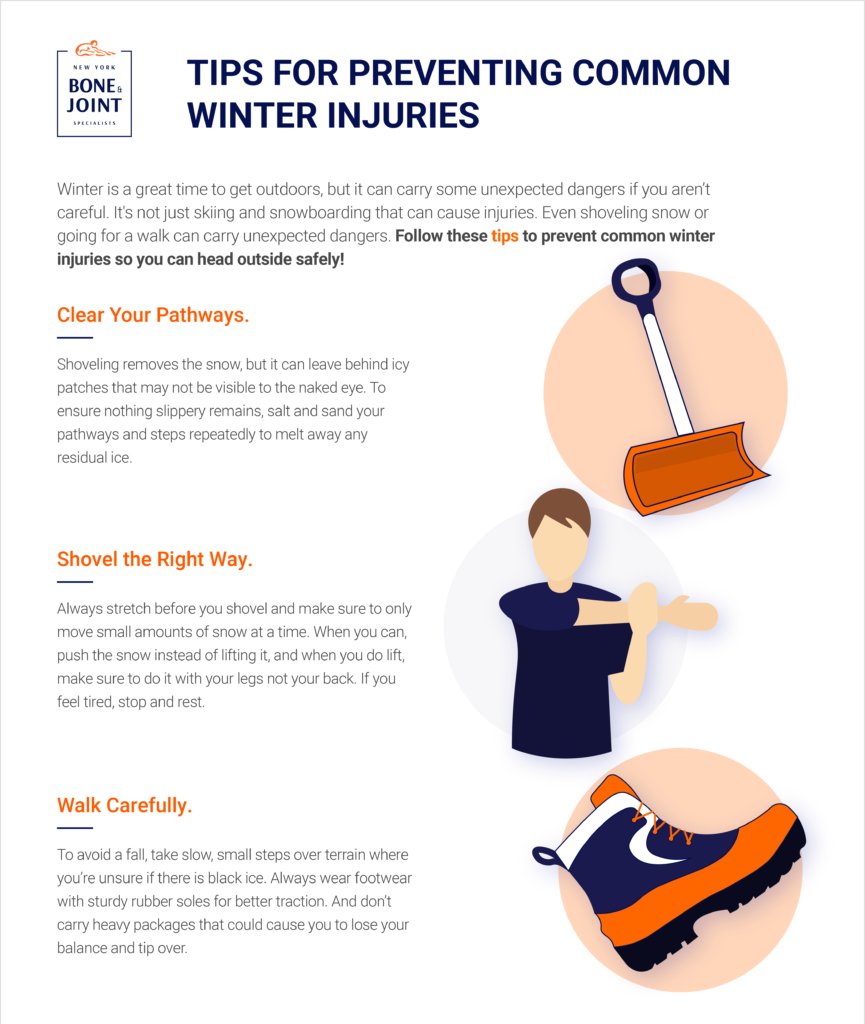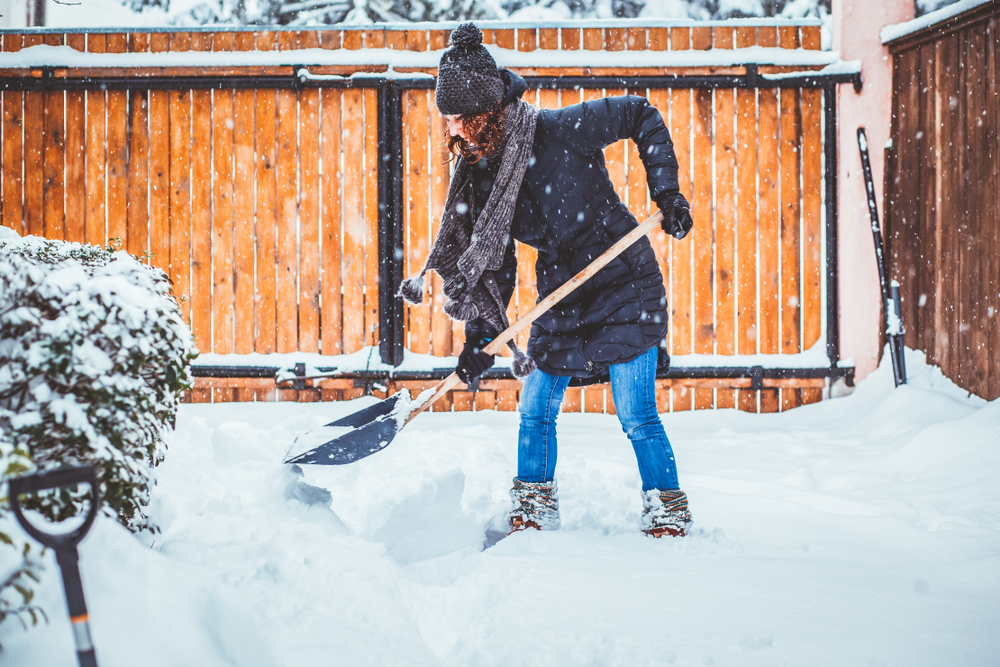Winter is a great time to get outdoors — but it can carry some unexpected dangers if you aren’t careful. Find out how to prevent common winter injuries so you can head outside safely!
Although some people prefer warmer temperatures, many spend the year waiting for the time it gets cold enough to take part in all of winter’s unique pleasures. From winter sports to brisk walks to snowball fights, there’s a lot to enjoy during the colder months. Unfortunately, along with the snow and ice comes a greater chance of orthopedic injuries.
When people think about winter injuries, they tend to focus on the ones tied to sports, like skiing and snowboarding. While there’s no denying that those activities can lead to orthopedic injuries (a study by Johns Hopkins University in 2012 estimated 10 million Americans ski or snowboard, with approximately 600,000 injuries reported each year), you don’t have to glide down a mountain to be at risk. The U.S. Bureau of Labor Statistics recorded 20,460 ice, sleet, and snow-related injuries for workers in 2017 alone.
And it’s not just adults who are at risk. Children who toboggan down hills can get hurt, too. Between 2008 and 2017, 220,488 patients received treatment in emergency rooms due to sledding related injuries, a study conducted by researchers at the Center for Injury Research and Policy at Nationwide Children’s Hospital. Roughly 70 percent were children under the age of 19.
Luckily, you can prevent common wintertime orthopedic injuries whether on the slopes or around your house by following some safety tips.
Common Non-Sport Winter Orthopedic Injuries
The snowy and icy conditions that often accompany the cold weather of winter can cause a number of injuries even if you stay far away from the slopes. Slips and falls are particularly common examples. Fortunately, most only result in bruises. But some falls can severely injure vulnerable ligaments or bones — something that becomes particularly dangerous as you get older. Even if you don’t fall, a sudden wrenching of your knee while walking over ice can sprain or tear a ligament like the anterior cruciate ligament (ACL) or meniscus, two important ligaments in the knee.
Shoveling snow is another common winter activity that has some risks. Whether from your sidewalk or off your car, shoveling snow puts enormous pressure on your lower back muscles and spine that can lead to pulled muscles or herniated discs. Plus, shoveling can leave behind icy patches that are difficult to see, but can lead to serious slips and falls.
Preventing Wintertime Injuries
Fortunately, you can still enjoy your wintertime activities (and chores) safely as long as you take precautions and know your limitations.

And those aren’t the only tips! Here are some more:
On The Slopes
Prepare for Your Run. Before you hit the slopes, take time to ready your muscles for the workout. Weight-bearing and resistance exercise strengthen the muscles and connective tissues you rely on when you ski. And no matter how much exercise you’ve done beforehand, always stretch and warm up prior to your run. Cold muscles injure more easily.
Wear the Right Equipment. Check your equipment, such as skis, snowboards, and boots, to ensure they fit properly and are in good condition. Ill-fitting equipment often leads to falls. And always wear a helmet to protect your head in case you take a spill against the hard snow or ground. Helmets are also a great option for children sledding down a hill.
Take a Safety Course. Even experienced skiers benefit from a remedial course on ski safety. An instructor can show you how to fall properly so you avoid a serious injury.
Around the Home
Clear Your Pathways. Shoveling removes the snow, but it can leave behind icy patches that may not be visible to the naked eye. To ensure nothing slippery remains, salt and sand your pathways and steps repeatedly to melt away any residual ice.
Shovel the Right Way. No one likes to shovel snow, but it’s an unfortunate reality of living in snowy regions. You can cut down on your chance of an injury by shoveling the right way. Always stretch before you shovel and make sure to only move small amounts of snow at a time. When you can, push the snow instead of lifting it, and when you do lift, make sure to do it with your legs not your back. If you feel tired, stop and rest.
Walk Carefully. It’s easy to lose your balance and take a spill on ice or snow. To avoid a fall, take slow, small steps over terrain where you’re unsure if there is black ice. When outdoors in winter, wear footwear with sturdy rubber soles for better traction. And don’t carry heavy packages that could cause you to lose your balance and tip over. Wherever possible, keep your hands free to better catch yourself in case of a fall.
Treating Common Winter Injuries
While serious injuries, like broken bones, must be treated in an emergency room right away, most common wintertime injuries can be treated at home with ice or heat, over-the-counter pain medications, and rest. But sometimes that’s not enough. If the pain persists or you think you may have severely injured a ligament, it’s important to see an orthopedist right away. The physicians at New York Bone & Joint Specialists can diagnose your injury and prescribe treatment to help you feel better. Contact our office today for a consultation.




